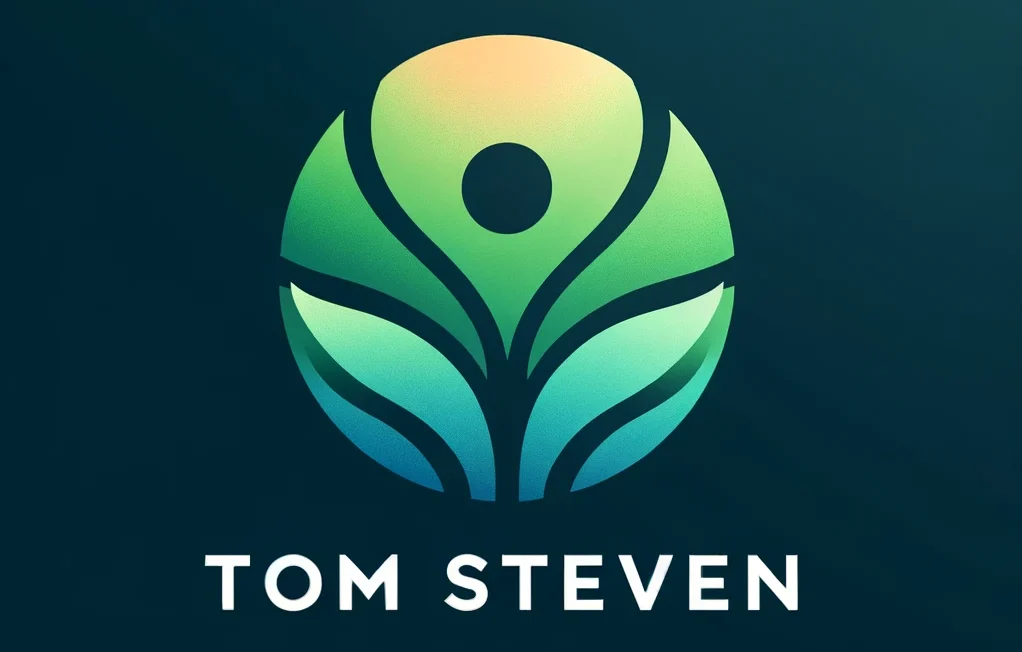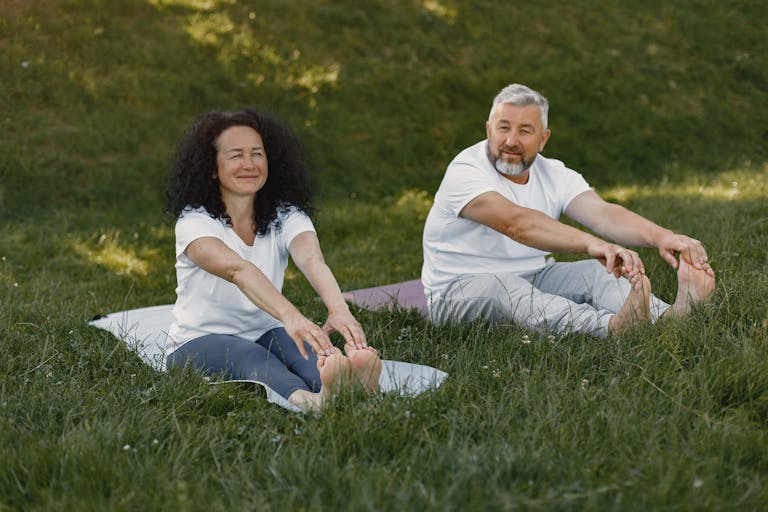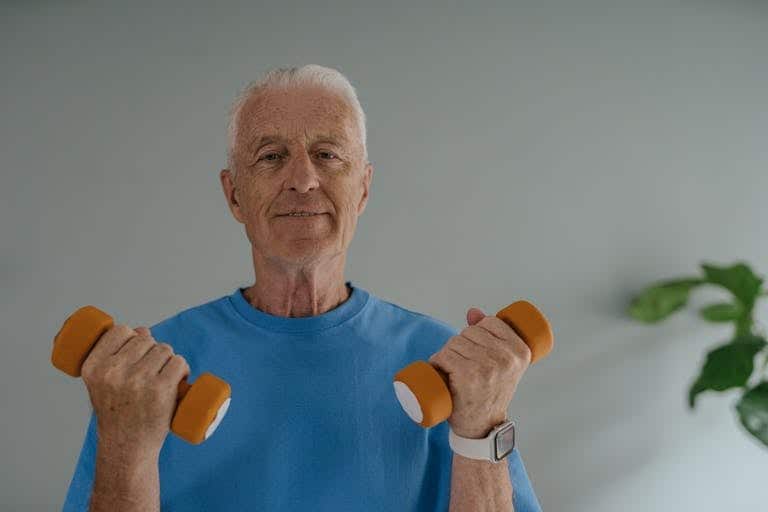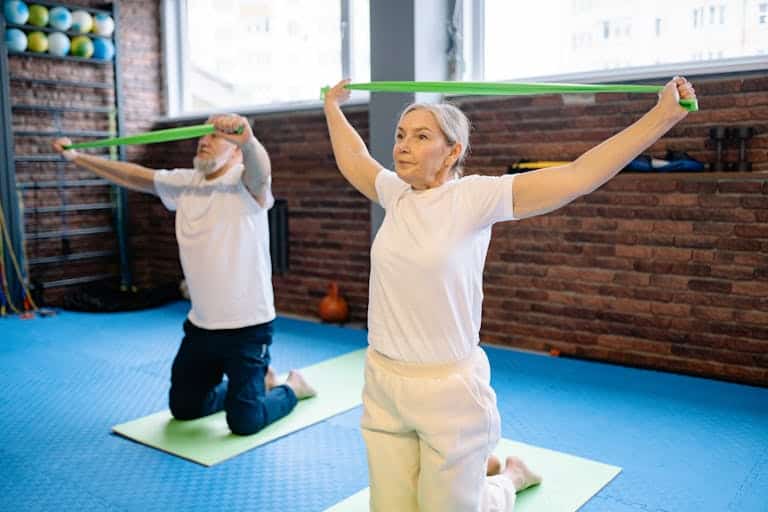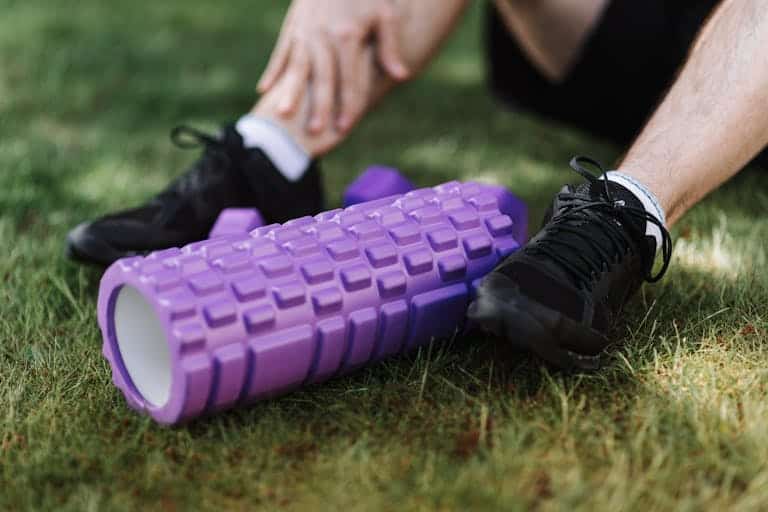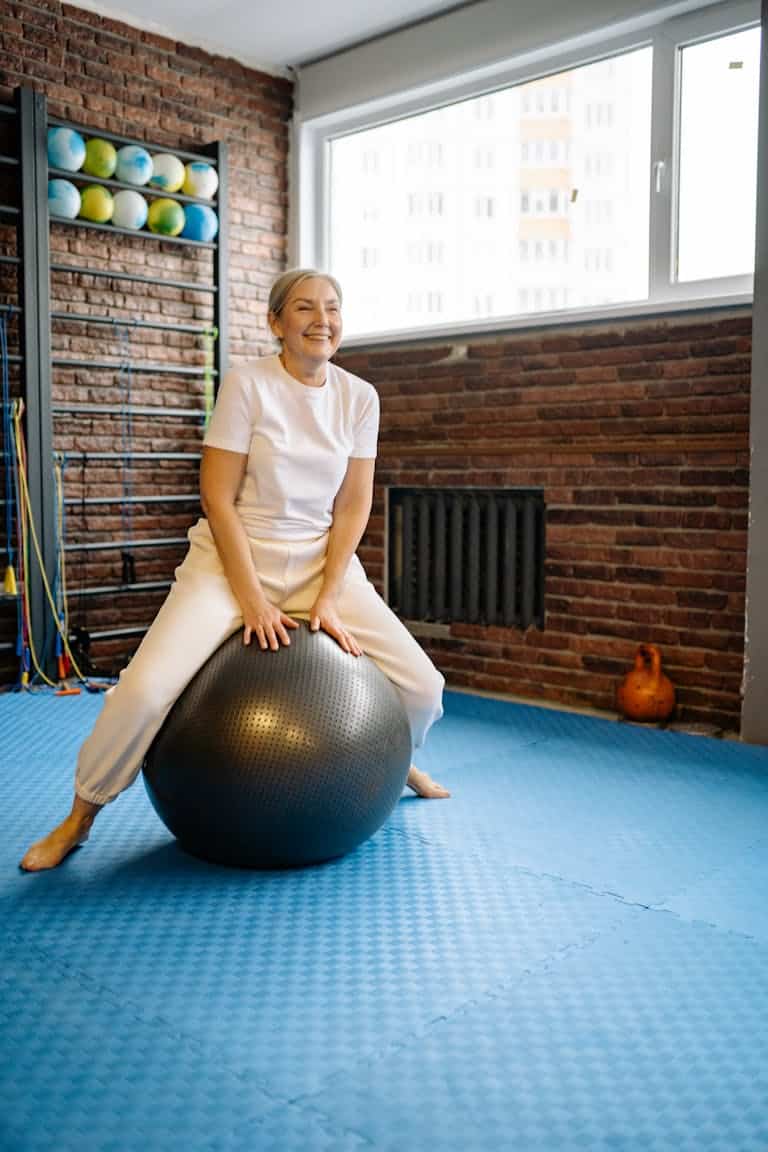Nutritional Tips for Active Seniors: Boost Energy & Vitality
Disclosure: My rankings are meticulously crafted using advanced algorithms that analyze a vast number of customer reviews, assessing everything from product quality and brand reputation to customer service and popular trends. While these rankings are based on my independent evaluations and intended to serve as a helpful starting point for your shopping journey, it’s worth noting that by purchasing through my recommendations, you’ll access the best prices I’ve found. Additionally, I may earn a commission at no extra cost to you, which supports my ability to continue offering valuable insights.
Table of Contents
Introduction:
In the “Ultimate Guide to Active Aging and Physical Fitness for Seniors“, we explored the powerful connection between staying physically active and aging gracefully. But as every senior striving to maintain an active lifestyle knows, physical activity is only half of the equation. Proper nutrition is the foundation that fuels energy, promotes recovery, and supports overall well-being as we age. This post dives deeper into the nutritional strategies that can help seniors not just stay active but thrive in their golden years.
Whether you’re tackling a morning walk, engaging in strength training, or practicing gentle Chair Yoga for Seniors, fueling your body correctly is essential. In this article, we’ll build on the key themes from our pillar post and expand on how balanced, nutrient-rich meals can support seniors in staying energized, maintaining muscle mass, and managing chronic conditions like diabetes or arthritis.
Along the way, we’ll also offer practical meal ideas that are easy to prepare and fit seamlessly into an active senior lifestyle. And for those looking to enhance their overall wellness journey, be sure to check out Mindful Eating: Unlocking the Secret to a Balanced Diet and Enhanced Well-being, where we break down the mental and emotional aspects of eating with purpose.
“Aging is not lost youth but a new stage of opportunity and strength.” — Betty Friedan
Why Proper Nutrition is Vital for Active Seniors
When we talk about staying active as we age, nutrition becomes the unsung hero. I used to think that as long as I stayed moving—walking, biking, gardening—everything else would fall into place. But the truth is, what you fuel your body with becomes even more important as you grow older. Proper nutrition for active seniors is like adding premium fuel to a car, you’re not just keeping it running, you’re helping it run at its best.
How Age Affects Metabolism and Nutrient Absorption
One of the biggest shifts that happens as we get older is the slowing down of metabolism. Your body isn’t as quick to burn calories, meaning you might not feel as hungry as you used to. I remember my own parents hitting their 60s and suddenly skipping meals because “they just weren’t hungry.” The problem is, even if you’re eating less, your body still needs just as many, if not more, nutrients to function properly.
Worse yet, the ability to absorb some key nutrients diminishes with age. For example, your stomach produces less acid over time, which can make it harder to absorb nutrients like vitamin B12, calcium, and magnesium. Without proper absorption, even the healthiest diet can leave you feeling sluggish and weak. And we know that’s the last thing an active senior wants when you’re trying to stay on top of a hiking trail or keep up with a grandkid at the park.
Maintaining Muscle Mass, Joint Health, and Flexibility Through Diet
This is where I learned a hard truth. I used to think exercise alone could keep muscles strong as you age, but nutrition plays a critical role. As seniors, we need more protein to maintain muscle mass. You’ve probably heard of something called sarcopenia, which is just a fancy word for muscle loss that naturally happens with age. Getting enough protein can slow down this process significantly, helping you keep your strength and mobility.
“To keep the body in good health is a duty… otherwise we shall not be able to keep our mind strong and clear.” — Buddha
Beyond muscles, joints are another big concern. Foods rich in omega-3 fatty acids, like salmon and flaxseeds, can help reduce inflammation and support joint flexibility. There was a time when I had no idea that my aching knees after a long walk could be related to what I was eating. Once I made an effort to include more anti-inflammatory foods in my diet, it made a noticeable difference in how my joints felt. Now, I make sure that things like fish, chia seeds, and walnuts are regulars in my grocery cart.
Increased Need for Protein, Calcium, and Vitamin D
Let’s talk nutrients—specifically protein, calcium, and vitamin D. As we get older, our bodies not only need more of these nutrients but also struggle to get them from food alone. Protein, like I mentioned earlier, is essential for muscle health. A simple way to get more of it is by adding lean sources like chicken, tofu, or even a good old-fashioned boiled egg to your meals. I started incorporating a protein shake into my morning routine, and it’s been a game-changer for keeping me full and energized throughout the day.
Calcium and vitamin D are just as important, but they tend to slip under the radar. Both are crucial for maintaining bone health and preventing osteoporosis, which becomes a real concern as we age. If you’re anything like me, you probably grew up thinking a glass of milk was enough to keep your bones strong. Nowadays, seniors need extra vitamin D to actually absorb that calcium effectively. I try to spend at least 15 minutes outside in the sun each day to naturally boost my vitamin D levels, but on cloudy days, I rely on a supplement to make sure I’m getting what I need.
The Risks of Poor Nutrition in Seniors
Neglecting proper nutrition can lead to some pretty serious consequences. One of the scariest things about poor nutrition for active seniors is how quickly things can spiral. Muscle loss is just the beginning. Without enough nutrients, you can start to feel constantly fatigued, making it harder to stay active. This happened to a close family friend of mine, who was always on the go but started feeling tired all the time. It turned out she wasn’t getting enough protein, and her muscle mass was rapidly declining. It’s easy to overlook, but it’s a slippery slope that can lead to more serious health problems, like weakened immune function and increased risk of illness.
On top of that, poor nutrition can contribute to balance issues and falls—something no active senior wants to worry about. Eating the right foods can truly be the difference between staying strong and mobile or facing preventable injuries.
Final Thoughts
To sum it up, proper nutrition is your best ally as you age and stay active. It’s not just about eating to fill your stomach—it’s about eating with purpose to fuel your activities and protect your body. By making small adjustments like adding more protein, being mindful of nutrient absorption, and focusing on joint-friendly foods, you can keep living the vibrant, active life you love. And trust me, your body will thank you for it.
Best Nutrient-Rich Foods for Active Seniors
As we get older, eating nutrient-rich foods becomes more than just a good habit—it’s essential for maintaining strength, energy, and overall health. When I started learning about nutrition for active seniors, I was amazed at how much of a difference the right foods could make. It’s not just about eating more; it’s about eating smarter. Below, I’ll break down some of the best foods that should be on every senior’s plate to support an active lifestyle.
Protein Sources: Lean Meats, Beans, Lentils, and Tofu for Muscle Mass and Repair
If there’s one nutrient that seniors need to prioritize, it’s protein. Muscle loss happens naturally with age, but getting enough protein can help slow this process. Recent research emphasizes that seniors may require more protein than younger adults—specifically above the recommended 0.8 g/kg/day—to preserve lean muscle mass and support physical performance (Nishimura et al., 2023). Incorporating high-quality protein sources like lean meats, beans, and tofu helps support muscle repair and growth, especially when paired with a regular strength training routine.
Lean meats like chicken and turkey offer high protein without the extra fat found in red meat. Personally, I find swapping out heavier meats for leaner options leaves me feeling more energized and less sluggish after meals.
For those who prefer plant-based options, beans, lentils, and tofu are excellent protein sources and are rich in fiber. A simple lentil soup or stir-fry with tofu is my favorite go-to, both nutritious and easy to prepare.
Lastly, don’t forget about eggs! They’re a quick and versatile way to pack in protein, whether scrambled for breakfast or boiled as a snack.
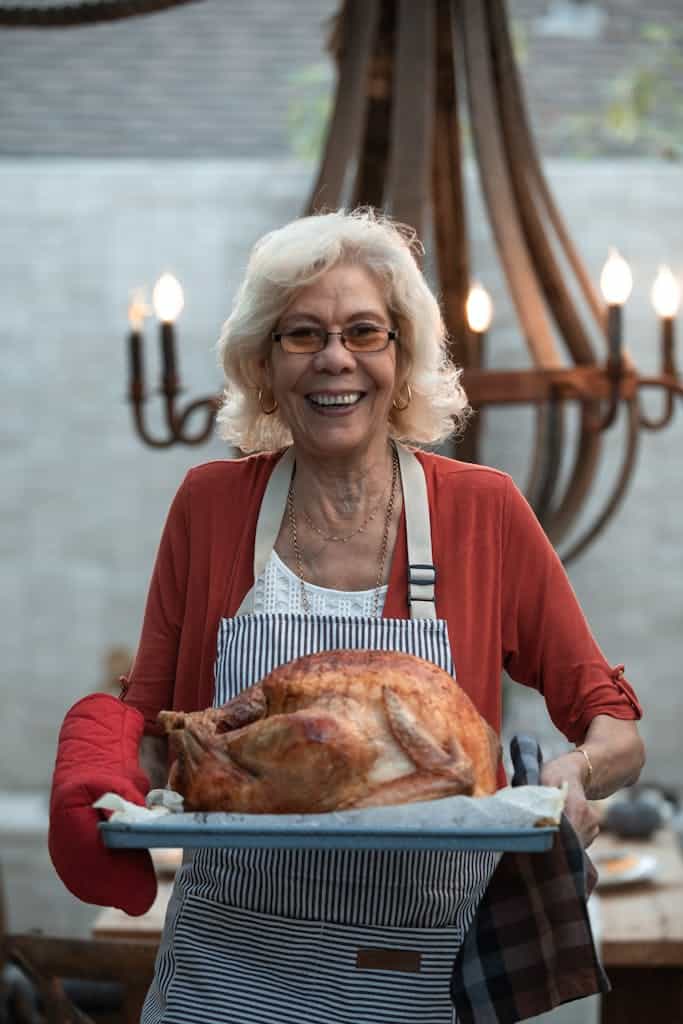
Omega-3 Fatty Acids: Salmon, Flaxseeds, and Walnuts for Joint Health and Reduced Inflammation
If you’ve ever felt a bit creaky after a long walk or exercise, this one’s for you. Omega-3 fatty acids are like the secret weapon for joint health. They help reduce inflammation, which is especially important as joints can get stiff or inflamed with age.
By including omega-3 fatty acids from sources like salmon and flaxseeds, seniors can reduce inflammation and protect joint health, which is essential when incorporating stretching exercises to maintain mobility.
Salmon is one of the best sources of omega-3s, and I’ve made it a point to have it at least once or twice a week. Not only is it delicious, but it’s also versatile—you can bake it, grill it, or even toss it into a salad. If fish isn’t your thing, no worries! You can still get plenty of omega-3s from plant-based sources like flaxseeds and walnuts. I love adding a handful of walnuts to my morning oatmeal or sprinkling flaxseeds on my yogurt.
Another great source that often gets overlooked is chia seeds. They’re small but mighty, packed with omega-3s, and easy to add to smoothies or even water. The key with omega-3s is consistency, so try incorporating these foods into your meals regularly, and your joints will thank you.
Calcium and Vitamin D: Dairy Products, Fortified Plant Milks, and Leafy Greens for Bone Strength
Bone health becomes more crucial as we age, especially if you want to stay active. Calcium and vitamin D are the dynamic duo for keeping your bones strong and helping prevent osteoporosis. According to the PROVIDE Study, vitamin D and leucine-enriched whey protein supplementation significantly improved muscle mass and physical performance in older adults (Chang et al., 2023). This highlights the importance of including calcium and vitamin D-rich foods, like dairy products and fortified plant milks, in your diet. For those not getting enough sun, consider a vitamin D supplement to support bone and muscle health.
Most people think of dairy products like milk, yogurt, and cheese when they think of calcium, and they’re right! These foods are excellent sources, and they’re easily accessible. I make sure to have yogurt with breakfast or cheese as a snack during the day to keep my calcium levels up.
But if you’re lactose intolerant or just prefer plant-based options, there are plenty of calcium-rich alternatives. Fortified plant milks like almond or soy milk are fantastic choices. These are often fortified with calcium and vitamin D, so you’re getting the benefits without needing dairy.
And don’t forget about leafy greens! Kale, collard greens, and bok choy are packed with calcium. One of my go-to salads is a mix of kale, roasted veggies, and a bit of goat cheese—it’s a nutrient powerhouse. Pair these foods with a bit of sun exposure (for that vitamin D), or consider a supplement if needed, especially during the winter months when the sun is scarce.
“Health is like money, we never have a true idea of its value until we lose it.” — Josh Billings

Fiber-Rich Foods: Whole Grains, Fruits, and Vegetables for Digestion and Heart Health
Fiber is the unsung hero when it comes to both digestion and heart health. As we get older, digestion can slow down, leading to bloating or constipation. Fiber-rich foods help keep everything moving smoothly, while also supporting a healthy heart by lowering cholesterol levels.
Whole grains like oatmeal, brown rice, and whole wheat bread should be regulars in your diet. I’ve switched to oatmeal in the mornings and have found it not only keeps me full but also gives me steady energy throughout the day. Whole grains are also great for maintaining balanced blood sugar levels, which can be helpful for seniors managing diabetes.
When it comes to fruits and vegetables, the more, the better! Apples, berries, and pears are some of the best fiber-rich fruits, and they’re easy to add as snacks or to meals. For veggies, think leafy greens, broccoli, and carrots. One trick I’ve learned is to make a big batch of roasted veggies at the beginning of the week, so they’re ready to go when I need them. It saves time and makes sure I’m always getting my daily dose of fiber.
Final Thoughts
Staying active is important, but giving your body the right fuel is what really helps you thrive in your senior years. By focusing on protein for muscle repair, omega-3s for joint health, calcium and vitamin D for bones, and fiber for digestion and heart health, you’ll have the energy and strength to keep up with all the activities you love. Plus, eating nutrient-rich foods doesn’t have to be boring or time-consuming—simple tweaks can make all the difference!
Meal Timing and Portion Control for Optimal Energy
If there’s one thing I’ve learned as I’ve gotten older, it’s that when you eat is just as important as what you eat. For active seniors, maintaining energy levels throughout the day requires a bit of planning—because let’s face it, no one wants to hit that mid-afternoon slump right before a walk or yoga class. Meal timing and portion control play key roles in keeping your energy steady, ensuring you can stay on top of all your favorite activities without feeling like you’re running on empty.
“The groundwork of all happiness is health.” — Leigh Hunt
Why Spreading Meals Throughout the Day is Key to Energy Balance
When I was younger, skipping a meal here and there didn’t seem like a big deal. But as we age, our bodies don’t bounce back as quickly from those energy dips. I used to think eating three big meals a day was the way to go, but I’ve since learned that smaller, more frequent meals can actually help keep energy levels stable. By spreading your meals evenly throughout the day, you’re giving your body a steady stream of fuel rather than overwhelming it all at once or, worse, going too long without eating.
For seniors who are active, this approach is even more important. Your body needs regular energy to stay active, but large meals can leave you feeling sluggish. A strategy I’ve adopted is eating five smaller meals or snacks spaced about 3-4 hours apart. It might look like this: a light breakfast, a mid-morning snack, lunch, an afternoon snack, and dinner. Each mini-meal should include a balance of carbs, protein, and healthy fats to keep energy levels stable and avoid those blood sugar spikes and crashes. It’s like feeding your body a steady drip of gasoline, so you can keep running smoothly all day.
Pre- and Post-Workout Meal Tips for Seniors
Fueling your body around exercise is another game changer, especially if you want to maintain an active lifestyle without feeling wiped out afterward. One thing I’ve realized is that pre-workout meals don’t have to be complicated, but they do need to be strategic. I’ll share one of my favorite combos: a banana with a spoonful of peanut butter about 30 minutes to an hour before exercise. Bananas provide a quick source of carbohydrates to give you energy, while the peanut butter adds some protein and healthy fat to keep you feeling satisfied.
For those with a sensitive stomach, something light like a handful of almonds or a small piece of toast with avocado can work wonders. The key here is not to go overboard, you want just enough fuel to get you through the activity without weighing you down.
After exercise, recovery becomes the priority. Post-workout meals should focus on repairing muscles and replenishing energy stores. A smoothie with protein powder, a handful of berries, and a splash of almond milk is my go-to. It’s easy to digest and full of nutrients that help your body bounce back. If you’re not into smoothies, another simple option could be some Greek yogurt with honey and a sprinkle of granola for that balance of protein and carbs. The goal here is to eat something within 30-60 minutes after your workout to jumpstart muscle repair.
A pre-workout snack like a banana with peanut butter or a post-walk smoothie helps fuel recovery and energy, especially for seniors just beginning a walking program.
Hydration Strategies for Active Seniors
Hydration is often the most overlooked piece of the puzzle, but staying hydrated is absolutely critical for active seniors. Dehydration can sneak up on you faster as you age because your body doesn’t retain water as well, and your thirst signals become less reliable. I used to be terrible at drinking enough water throughout the day, especially during busy or active days. But after experiencing the dreaded “dehydration headache” more than once, I made it a priority.
Staying hydrated is key to optimizing both fitness and overall well-being. Proper hydration also improves sleep quality, which is crucial for recovery after exercise, as discussed in how sleep and fitness impact health for seniors.
For active seniors, drinking water regularly is important, but it’s not just about plain water. If you’re sweating a lot, you need to replenish electrolytes—especially sodium, potassium, and magnesium—which you lose through sweat. For me, this is particularly true during the warmer months or after a strenuous activity like biking or even gardening under the sun. I found that drinking an electrolyte beverage, like coconut water or an electrolyte tablet dissolved in water, helps me feel more balanced.
Here are a few hydration tips I’ve found helpful:
- Start the day with water: I make it a habit to drink a glass of water first thing in the morning, even before breakfast.
- Keep a water bottle handy: This sounds obvious, but having water within arm’s reach during the day makes it so much easier to sip regularly.
- Incorporate hydrating foods: Water-rich foods like cucumbers, watermelon, and oranges can also help boost hydration levels.
If you’re sweating heavily from exercise or outdoor activities, it’s a good idea to drink fluids with electrolytes, especially if plain water doesn’t seem to be cutting it. Just be cautious about sports drinks, as some can be loaded with sugar. Opt for low-sugar or natural electrolyte options to stay balanced.
Final Thoughts
Mastering meal timing, portion control, and hydration can make a huge difference in how you feel throughout the day—especially if you’re committed to staying active as you age. By spacing your meals evenly, choosing the right pre- and post-workout snacks, and keeping hydration in check (don’t forget those electrolytes!), you’re setting yourself up for success. Whether you’re hitting the gym, going for a walk, or tackling a long day of errands, these simple strategies will help you stay energized and feeling your best.
Supplement Recommendations for Active Seniors
No matter how well you plan your meals, there are days when getting all the nutrients your body needs is a challenge—especially as an active senior. While whole foods should always be the foundation of a healthy diet, supplements can play a huge role in filling nutritional gaps. Whether it’s for boosting protein intake, supporting joint health, or keeping bones strong, the right supplements can help you stay active and energized. Let’s dive into the best supplement recommendations for active seniors and how they can support your overall health.
Protein Supplements: Whey, Casein, or Plant-Based Proteins
One of the most common challenges for seniors, especially those staying active, is getting enough protein. While food is always the best source, protein supplements can fill in the gaps when daily intake falls short. For seniors looking to maintain muscle strength, adding a protein shake, whether whey, casein, or plant-based, can be a simple and effective solution.
Whey protein is fast-digesting, making it ideal for post-workout recovery, while casein protein provides a slower release of amino acids, perfect for overnight muscle repair. I personally enjoy a smoothie with whey protein, almond milk, and spinach after exercising.
If you’re looking for something that digests more slowly and helps with overnight muscle repair, casein protein is a great option. It releases amino acids gradually, keeping your muscles fueled even while you sleep.
For those who prefer plant-based options, there are plenty of high-quality plant-based protein powders made from peas, rice, hemp, or soy. I’ve tried a few different ones, and honestly, they’ve come a long way in taste and texture. Whether you’re vegan or just looking for variety, these are solid alternatives to animal-based proteins.
Multivitamins: Filling in Nutrient Gaps for Older Adults
Let’s face it, no matter how much we try, it’s tough to get every single nutrient we need from diet alone. That’s where a good multivitamin can be a lifesaver. For active seniors, a multivitamin that’s specially formulated for older adults is a great way to cover all your bases.
Multivitamins targeted at seniors are designed to meet the unique nutritional needs that change with age, including higher amounts of certain vitamins and minerals like vitamin B12, calcium, and magnesium. As we get older, the body doesn’t absorb these nutrients as well, so a little extra boost is often necessary.
Taking a multivitamin has definitely helped me feel more balanced, especially on those busy days when I’m not as mindful about my meals. Just make sure to choose a multivitamin designed specifically for seniors, as these are more likely to have the correct dosage for your needs.
Joint Supplements: Glucosamine and Chondroitin for Joint Health
Staying active can sometimes be hard on the joints, especially as we age. I remember waking up one morning with sore knees after a long walk and thinking, “Is this just part of getting older?” The good news is, there are joint supplements that can help keep those aches and pains in check.
Glucosamine and chondroitin are two of the most well-known supplements for joint health. They work by supporting cartilage, the tissue that cushions your joints, and reducing inflammation. I’ve found that taking these regularly has really helped with joint stiffness, especially after activities like hiking or gardening that put extra pressure on my knees.
While they’re not a magic bullet, I’ve heard from plenty of other seniors that they notice a real improvement in joint mobility after a few weeks of consistent use. Plus, the anti-inflammatory properties can be a nice bonus if you’re dealing with mild arthritis or joint discomfort after exercise.
Vitamin D and Calcium: Strengthening Bones for Long-Term Health
When it comes to bone health, vitamin D and calcium are the dynamic duo every senior needs to think about. We’ve talked about the importance of these nutrients in food, but if you’re not getting enough from your diet, or if you don’t spend much time in the sun, supplements are a must.
Calcium is the building block of strong bones, while vitamin D helps your body actually absorb that calcium. Without enough of these nutrients, your bones become more fragile, increasing your risk of fractures or conditions like osteoporosis. As someone who loves staying active, the last thing you want is to suffer a bone injury that could slow you down.
For a while, I thought I was getting enough calcium from my diet, but my doctor recommended adding a supplement just to be safe, especially since I don’t always get outside for that daily dose of sunlight. Most calcium supplements come paired with vitamin D, which makes it easy to get both in one go. If you’re not sure whether you need extra vitamin D or calcium, it’s a good idea to talk to your doctor and maybe get your levels checked—they can help you figure out the right dosage for your body’s needs.
Final Thoughts
Supplements can be a fantastic way to support an active senior lifestyle, but they should always complement—not replace—a healthy diet. Whether you’re using protein powders to build muscle, multivitamins to cover your nutrient bases, or joint supplements to keep moving comfortably, the key is consistency. If you’re unsure about which supplements are right for you, consult with your healthcare provider. They can offer personalized recommendations based on your health and activity level. Remember, staying active isn’t just about exercise—it’s about giving your body all the tools it needs to keep going strong!
Special Dietary Considerations for Active Seniors
As we get older, it’s not uncommon to face new health challenges, whether it’s managing a chronic condition like diabetes, developing food allergies, or simply noticing a reduced appetite. The good news? With the right dietary adjustments, you can still fuel an active lifestyle while keeping these issues in check. It’s all about paying attention to your body’s unique needs and making small but impactful changes. Let’s dive into how you can navigate these special dietary considerations while staying healthy and energetic.
Managing Chronic Conditions Like Diabetes, Heart Disease, or Arthritis Through Diet
For seniors dealing with chronic conditions, nutrition can be a powerful tool to manage symptoms and improve overall health. Take diabetes, for example, balancing blood sugar levels through smart food choices is key. If you’re managing diabetes, you’ll want to focus on foods that provide slow, steady energy without causing spikes in blood sugar. Complex carbohydrates like whole grains, beans, and vegetables are a great choice because they break down more slowly, helping to avoid those sudden energy crashes.
A family member of mine was diagnosed with type 2 diabetes, and I saw firsthand how tweaking her diet made a world of difference. Instead of cutting carbs completely, she started choosing high-fiber options, like swapping out white bread for whole grain and adding more non-starchy vegetables to her plate. Her energy levels evened out, and she felt more in control of her blood sugar.
For seniors managing chronic conditions like diabetes, choosing complex carbs and fiber-rich foods can help maintain stable blood sugar levels. Explore our holistic approach to diabetes management for more tailored dietary tips.
For heart disease, it’s all about eating heart-healthy foods that reduce inflammation and promote good cholesterol levels. Omega-3 fatty acids from sources like salmon, walnuts, and flaxseeds are particularly helpful. Also, minimizing saturated fats, trans fats, and excess sodium can help keep your heart strong. If you’re like me and love a good snack, try reaching for unsalted nuts or sliced veggies with hummus instead of chips or processed foods.
When it comes to arthritis, the focus is often on reducing inflammation through diet. Foods rich in omega-3s, antioxidants, and fiber can help manage inflammation and joint pain. This might mean enjoying more leafy greens, berries, and fatty fish. A close friend of mine swears by her daily smoothie packed with spinach, blueberries, and a dash of turmeric for its anti-inflammatory benefits.
Adapting to Food Allergies or Intolerances That May Develop With Age
Here’s something that surprised me: food intolerances and allergies can develop later in life, even if you’ve eaten those foods for years without issue. Whether it’s lactose intolerance, gluten sensitivity, or a new allergy to certain nuts, adapting your diet can feel like a juggling act. I remember how frustrated my dad was when he suddenly couldn’t enjoy his favorite dairy products anymore without feeling uncomfortable.
For lactose intolerance, there are plenty of easy swaps. Plant-based milks like almond, soy, or oat milk are great alternatives, and many are fortified with calcium and vitamin D, so you’re still getting those essential nutrients. Lactose-free dairy products are another option if you don’t want to give up things like cheese or yogurt entirely. My dad switched to lactose-free milk and has been happily enjoying his morning coffee again, free of stomach aches.
If you develop a gluten intolerance, adjusting your diet can seem daunting at first, but with so many gluten-free options available now, it’s more manageable than ever. Gluten-free bread, pasta, and cereals can help you maintain your favorite meals. And don’t forget about naturally gluten-free whole grains like quinoa, rice, and buckwheat, which are packed with fiber and nutrients. One of my favorite gluten-free meals is a quinoa salad loaded with roasted vegetables and a lemon-tahini dressing—it’s satisfying, nutrient-dense, and perfect for an active day.

Easy-to-Prepare Meals for Seniors With Reduced Appetite
As we age, it’s common for appetite to decrease. The trick is to make sure the meals you do eat are nutrient-dense and packed with energy to fuel your day, without being too heavy or overwhelming. I’ve found that for many seniors, eating smaller, more frequent meals can help. Plus, making meals simple and easy to prepare is key, especially when energy or motivation to cook is low.
For seniors who struggle with appetite, smaller, nutrient-dense meals like soups and smoothies are ideal for maintaining energy without feeling overwhelmed. For more tips on holistic well-being, explore our guide on elderly wellness.
Here are some practical tips for creating easy, balanced meals:
- Go for nutrient-dense foods: Choose foods that pack a nutritional punch in small portions. For example, add avocado to toast, or throw a handful of spinach into scrambled eggs. Nut butters, hummus, and Greek yogurt are also great options that provide healthy fats and protein without taking up too much space in your stomach.
- Use pre-cut or frozen veggies: To save time and effort, stock up on pre-cut or frozen vegetables. They’re just as nutritious as fresh, and they make meal prep much quicker. A stir-fry with frozen broccoli, carrots, and some tofu or chicken can be ready in 15 minutes.
- Try smoothies and soups: Smoothies are one of my favorite ways to get a nutrient boost without having to eat a big meal. I like to blend spinach, banana, almond butter, and some protein powder for a quick breakfast or snack. Soups are also a fantastic option—something like a hearty lentil or vegetable soup is easy to make in large batches and can be reheated whenever you need a quick meal.
- Focus on protein: Since protein is essential for maintaining muscle mass, especially in active seniors, try incorporating it into every meal. If you don’t feel like cooking, a boiled egg, a piece of grilled chicken, or even a scoop of cottage cheese can do the trick.
For those who really struggle with appetite, smaller, high-calorie snacks like trail mix, cheese and crackers, or a protein bar can help boost your intake without forcing large meals. Keep them handy for when you need a quick bite between activities.
Final Thoughts
Managing a special diet doesn’t mean giving up on the foods you love or sacrificing your active lifestyle. Whether you’re dealing with a chronic condition, adjusting to new food intolerances, or simply facing a reduced appetite, the key is to find easy, nutritious options that fit your body’s needs. By choosing the right foods and keeping meals simple, you can still fuel your body with everything it needs to keep moving, even when challenges arise. Remember, it’s all about listening to your body and making adjustments that help you feel your best.
Senior-Friendly Meal Ideas for an Active Lifestyle
Eating well doesn’t have to be complicated, and when you’re trying to stay active, you want meals that are not only nutritious but also quick and easy to prepare. I’ve found that having a few go-to meals for each part of the day can take a lot of the guesswork out of eating well, especially when energy levels fluctuate or you don’t feel like spending hours in the kitchen. These senior-friendly meal ideas are balanced, packed with nutrients, and perfect for supporting an active lifestyle. Plus, they’re delicious and simple to put together!
Quick and Easy Breakfast Options
Getting your day off to a good start with a nutritious breakfast is crucial, especially if you’re planning on being active. But let’s be honest—no one wants to spend ages making breakfast. Here are two of my favorite fast and filling options:
- Oatmeal with Berries and Nuts: Oatmeal is a powerhouse for active seniors because it’s packed with fiber, keeping you full and energized for longer. It also provides slow-releasing carbs, which help maintain steady energy levels. I like to top my oatmeal with fresh or frozen berries (which are high in antioxidants) and a handful of nuts like almonds or walnuts for healthy fats and protein. If I’m craving something sweeter, I’ll drizzle a little honey or maple syrup on top.
- Scrambled Eggs with Spinach: Eggs are a fantastic source of protein and essential nutrients, perfect for keeping muscles strong. I love making a quick scramble with eggs and throwing in some fresh spinach. Spinach is rich in iron, calcium, and vitamins, which are all important for maintaining bone health and overall energy. It’s an easy breakfast that takes less than 10 minutes but keeps me satisfied for hours. You can even add a little feta cheese or a slice of whole-grain toast on the side for an extra boost.
Lunch Ideas for a Balanced Midday Meal
Lunch is all about refueling without feeling too heavy, especially if you’ve got activities planned for the afternoon. These meals are balanced with protein, healthy fats, and carbs to keep you going strong.
- Grilled Chicken or Tofu with Quinoa and Roasted Vegetables: This is one of my go-to lunches because it’s so versatile and easy to prep ahead of time. Quinoa is a fantastic grain for seniors since it’s packed with protein and fiber. I like to make a big batch of quinoa at the start of the week and pair it with either grilled chicken or tofu for a solid protein boost. Throw in some roasted vegetables like bell peppers, zucchini, or sweet potatoes, and you’ve got a nutrient-dense meal that keeps you full without weighing you down.
- Salad with Avocado, Hard-Boiled Eggs, and Nuts: When I’m looking for something lighter but still packed with nutrition, I’ll throw together a simple salad. I start with a bed of mixed greens, add a sliced avocado for healthy fats, hard-boiled eggs for protein, and a handful of nuts for crunch and an extra nutrient boost. I usually top it off with a light olive oil and lemon dressing. It’s a fresh, satisfying option that gives me steady energy throughout the afternoon.

Snack Ideas for Sustained Energy
Snacking between meals can be a great way to maintain energy levels, especially if you’re staying active throughout the day. The key is to choose snacks that are balanced with protein and fiber so you don’t end up feeling sluggish.
- Greek Yogurt with Honey: Greek yogurt is one of my favorite snacks because it’s loaded with protein and probiotics, which are great for digestion. I like to drizzle a bit of honey on top for natural sweetness, and sometimes I’ll throw in a few almonds or chia seeds for added texture and nutrients. It’s creamy, filling, and takes no time to prepare.
- Whole-Grain Crackers with Cheese: When I need something crunchy and savory, whole-grain crackers paired with a slice of cheese are a perfect snack. Whole grains give you a good dose of fiber, while the cheese adds protein and healthy fats. It’s a simple combination that delivers steady energy and is easy to keep on hand for whenever hunger strikes.
Dinner Ideas for a Satisfying End to the Day
After a full day of activities, dinner should be nourishing but not too heavy, allowing your body to recover while preparing for a restful night’s sleep. Here are two go-to dinner ideas that are both satisfying and nutrient-rich:
- Baked Salmon with Sweet Potato: Salmon is one of the best sources of omega-3 fatty acids, which support heart and joint health, making it a must for seniors staying active. I like to bake a fillet of salmon with just a little olive oil, salt, and pepper—it’s simple but flavorful. Pair it with a baked sweet potato, which is rich in fiber and antioxidants, and you’ve got a balanced meal that promotes both heart and muscle health.
- Stir-Fry with Tofu and Brown Rice: When I’m in the mood for something hearty and easy, a tofu stir-fry is my go-to. I start with cubed tofu, which is an excellent source of plant-based protein, and toss it in a pan with some olive oil, garlic, and whatever vegetables I have on hand—broccoli, carrots, and snap peas are some of my favorites. I serve it over brown rice, which provides long-lasting energy thanks to its fiber content. The beauty of a stir-fry is that you can make it in under 20 minutes, and it’s packed with flavor and nutrients.
Final Thoughts
Eating well doesn’t have to be complicated or time-consuming, even for active seniors. These meal ideas are simple, nutritious, and designed to support your body as it moves through the day. From hearty breakfasts that kickstart your energy to satisfying dinners that help with recovery, these senior-friendly meals are balanced and easy to prepare. By focusing on nutrient-dense ingredients and keeping things simple, you’ll have more time and energy to focus on what matters most, staying active and enjoying life to the fullest!
Conclusion:
As you continue to focus on staying active and healthy, remember that nutrition plays a vital role in supporting your physical fitness. For a comprehensive look at how to optimize both exercise and diet, revisit our Ultimate Guide to Active Aging and Physical Fitness for Seniors.
Staying active as a senior is one of the best ways to maintain your health and quality of life, but it’s crucial to fuel your body properly. By prioritizing nutrient-dense foods, staying hydrated, and considering supplements tailored to your needs, you can boost your energy and vitality for years to come. Remember, nutrition is highly individual, so consult with your healthcare provider for personalized advice.
As famed nutritionist Adelle Davis once said,
“We are indeed much more than what we eat, but what we eat can nevertheless help us to be much more than we are.”
Take charge of your nutrition today and keep thriving!
Reference:
- Nishimura, Y., Højfeldt, G., Breen, L., Tetens, I., & Holm, L. (2023). Dietary protein requirements and recommendations for healthy older adults: A critical narrative review of the scientific evidence. Nutrition Research Reviews, 36(1), 69-85. https://doi.org/10.1017/S0954422421000329
- Chang, M. C., & Choo, Y. J. (2023). Effects of Whey Protein, Leucine, and Vitamin D Supplementation in Patients with Sarcopenia: A Systematic Review and Meta-Analysis. Nutrients, 15(3), 521. https://doi.org/10.3390/nu15030521
